Carlos Jose Hernandez and Joshua Zuazo were sentenced to life without the possibility of parole in the 2024 murder of Hussein “Sam” Murray.
The Apple iWatch: An industry upheaval?
The late Nicolas Hayek saved the day for the Swiss watch industry in the 1980s. Who will do the same to mitigate the impact of the iWatch today, columnist Jan Brassem asks.

Apple’s sagacious and highly destructive blockbuster lineup of their iPhone, iPod and iPad are extremely formidable products (stone-cold category killers, some say), and have transformed, in certain instances eviscerated, the U.S. music, digital, paper, publishing, photography and communication industries.
For example, based on convenience, size, speed and price, some consumers have started using the iPhone as their main camera instead of the traditional point-and-shoot models. The same goes for phone booths and desktop phones (replaced by the iPhone), CDs (iPod, iPhone), hard-cover books (iPad), magazines (iPad) and even folded-paper road maps (iPad). There are more, but you get the idea.
Thanks to the Apple product lineup, American culture also has been altered. Whatever happened to table manners (sullied by the iPhone and texting), alarm clocks (replaced by the iPhone), attention spans (diverted by the iPhone), conversations (blocked out by ear buds), driving safety (iPhone texting) and so on?
The looming iWatch launch
Although Apple is the most valuable company in the world, reporting a $10.7 billion profit in the second quarter of fiscal 2014, it is also the most competitive and pathologically secretive.
When Apple launches a product--generally industry-altering products (see above)--it designs them so they will sell in large quantities and make immense profits. If your company’s product(s) even remotely compete with any Apple creation, beware.
At least 17 global tech firms have launched their smartwatches, with others on the drawing board or recent entrants in a very crowded field indeed.
There has been time enough for Apple, as part of their marketing strategy, to view the landscape and observe their competitors’ expensive mistakes. Apple, for example, considers consumer fashion, in contrast to their rivals’ dithering design approach, a critical component of product success. Sir Jonathan Ives, reputed to be the world’s foremost industrial designer, leads Apple’s 100 professional (watch) design team.
The wearable technology market stampede
With the launch of so many high-tech consumer products lately, it’s no surprise that these companies have discovered a new consumer market opportunity, namely the wearable technology segment. As The New York Times’ Eric Pfanner wrote recently, “… turn(ing) the human body into a mobile computing
Simply put, the smartwatch communicates with a cell phone via Bluetooth technology. The blockbuster concept was discovered in 2012 and, before the end of that year, global smartwatch sales totaled $70 million. In 2014, it should exceed $2.5 billion.
With all the iPads, iPods, iPhones, smartphones, tablets and who knows what else, it is no surprise that tech firms, including Apple, would clamber like a tech “jail break” into watches, which are considered the lowest hanging fruit of the wearable technology segment. Easy pickings, indeed.
The tumultuous history of watches
“During WW I, soldiers had to be alert to precise timing,” writes David Boettcher in Smithsonian Magazine. “Suddenly, wristwatches seemed manly. It was the iPhone of its day, (considered a) leading-edge technology.”
Like other innovative mechanical developments of those days, wristwatches spread virally. After the war, millions of soldiers developed a taste for the wristwatch-wearing habit. An industry was born and, over the years, developed with gorgeous designs and fine mechanical movements.
There were challenges, however.
In the early 1980s, for example, because of higher labor rates, the Swiss mechanical watch industry had lost over 60,000 jobs to the less expensive quartz watch movements made in Japan, an unanticipated and potentially dangerous mechanical competitor.
Switzerland, at that time, was the watch capital of the world. Nevertheless, the Swiss government was prepared to hand over a major portion of Swiss pride and history to the Japanese. In certain respects, the companies, the industry, and even Switzerland itself, were fiscal train wrecks. No one was smiling.
Nicolas Hayek, a successful Swiss management consultant, a leader and, some say, a business genius, was asked by the two major Swiss banks to prepare a plan for the sale of two of the country’s struggling watchmaking giants to Japan.
Hayek immediately designed a Swiss rescue plan. In summary, he created and executed strategies that resulted in one of the most spectacular industrial comebacks in the world. To quote William Taylor, a former associate editor of Harvard Business Review, “The dimensions of the turnaround are staggering.”
To be fair, one of the results of the Hayek’s strategy, of course, was the development of the legendary, and stunning, Swatch watch. In its first full year of global distribution, 1983, Swatch sales totaled 1.1 million units and ballooned to 12 million units only three years later. Switzerland was saved.
What impact will the iWatch have on the watch industry?
With Apple’s competitive reputation, their “take-no-prisoners” business strategy will be sure to affect watch brands with a retail price of $1,000 or less, claims Ming-Chi Kuo of KGI Securities.
Some financial and market analysts (Goldman Sachs and The Wall Street Journal, for example) speculate that the iWatch will be manufactured in Taiwan and launched in the second half of 2014. They estimate global iWatch sales of 10 to 15 million units in 2014. That number should increases to 50 to 75 million in 2015.
That computes to $100 million in estimated 2014 sales and will come at the expense of existing smartwatch players.
Even worse, some mechanical watch manufacturers with weak balance sheets, an unclear branding strategy or poor distribution may have to close their doors, consolidate or merge. In other words: chaos.
One thing is clear, there is no Nicolas Hayek around to save the day and make a difference on the looming watch industry turmoil. The industry could sure use him.
The Latest

Yood will serve alongside Eduard Stefanescu, the sustainability manager for C.Hafner, a precious metals refiner in Germany.

The New Orleans jeweler is also hosting pop-up jewelry boutiques in New York City and Dallas.

How Jewelers of America’s 20 Under 40 are leading to ensure a brighter future for the jewelry industry.

Set in a Tiffany & Co. necklace, it sold for $4.2 million, the highest price and price per carat paid for a Paraíba tourmaline at auction.


The jeweler’s “Deep Freeze” display showcases its iconic jewelry designs frozen in a vintage icebox.

This year's theme is “Unveiling the Depths of the Ocean.”

Roseco’s 704-page catalog showcases new lab-grown diamonds, findings, tools & more—available in print or interactive digital editions.

In its annual report, Pinterest noted an increase in searches for brooches, heirloom jewelry, and ‘80s luxury.

Starting Jan. 1, customers can request the service for opal, peridot, and demantoid garnet.

The 111-year-old retailer celebrated the opening of its new location in Salem, New Hampshire, which is its third store in the state.

The new catalog features its most popular chains as well as new styles.

The filmmaker’s personal F.P. Journe “FFC” prototype was the star of Phillips’ recent record-setting watch auction in New York.

The new location in the Design District pays homage to Miami’s Art Deco heritage and its connection to the ocean.

Inflations, tariffs, and politics—including the government shutdown—were among consumers’ top concerns last month.
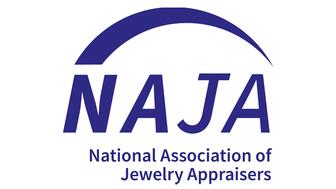
“Longtime favorite” presenters, as well as first-time speakers, will lead talks and workshops at the annual event in Tucson next year.
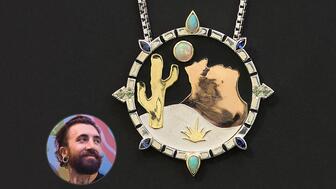
Silas Smith of Meridian Metalworks won the challenge with his pendant that blends Australian and American landscapes.
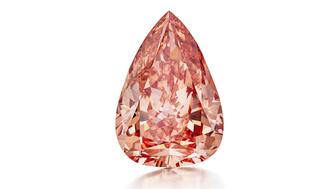
The sale of the 31.68-carat, sunset-hued stone was part of Sotheby’s first series of events and auctions in Abu Dhabi.
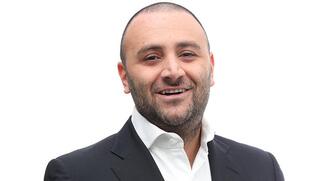
Most customers who walk into your store this month have made up their minds. Your job is to validate their choice, Emmanuel Raheb writes.

The collection features characters and motifs from Ukrainian folklore, including an enchanted mirror and a magic egg.

MatrixGold 3.11, the newest version of the jewelry design program, offers more flexibility, precision, and creative control.

The pavilion will be part of the 2026 JA New York Spring show, scheduled for March 15 to 17.

Kadet, a 1994 National Jeweler Retailer Hall of Fame inductee, helped grow the family-owned retailer in the Chicago area and beyond.

Billed as the world’s smallest wearable, Lumia Health’s new smart earrings have a health tracker subtly embedded in the back.
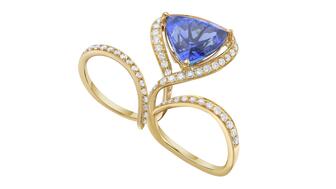
Don’t let those with December birthdays feel blue. Help them celebrate their month with blue zircon, turquoise, and tanzanite.

A choice that’s generated a lot of commentary, Pantone says “Cloud Dancer” marks a fresh start and encourages relaxation and creativity.
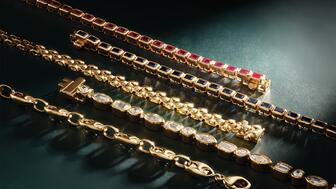
The manufacturer’s holiday campaign features a gift guide filled with trending designs and jewelry that can be personalized.


























